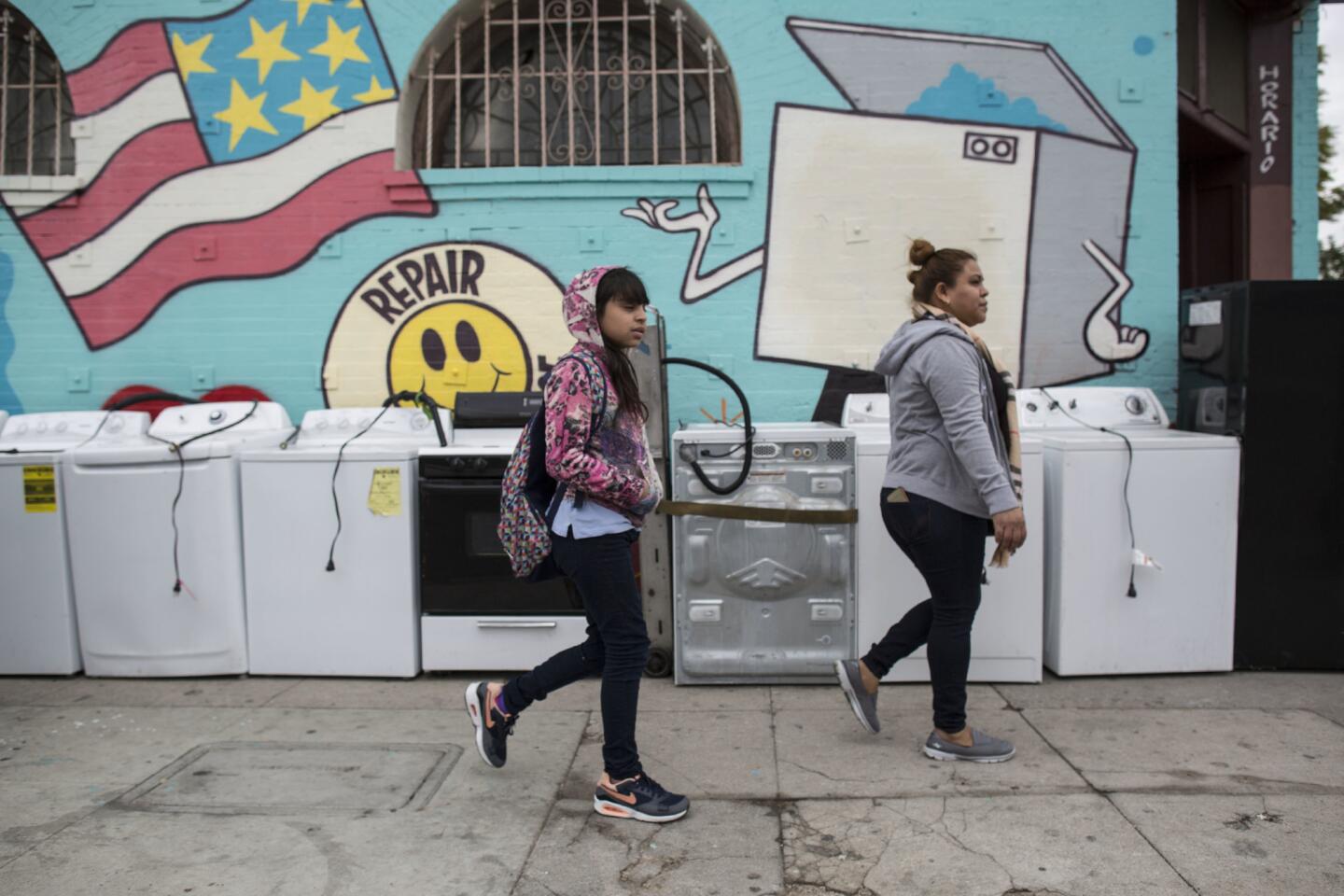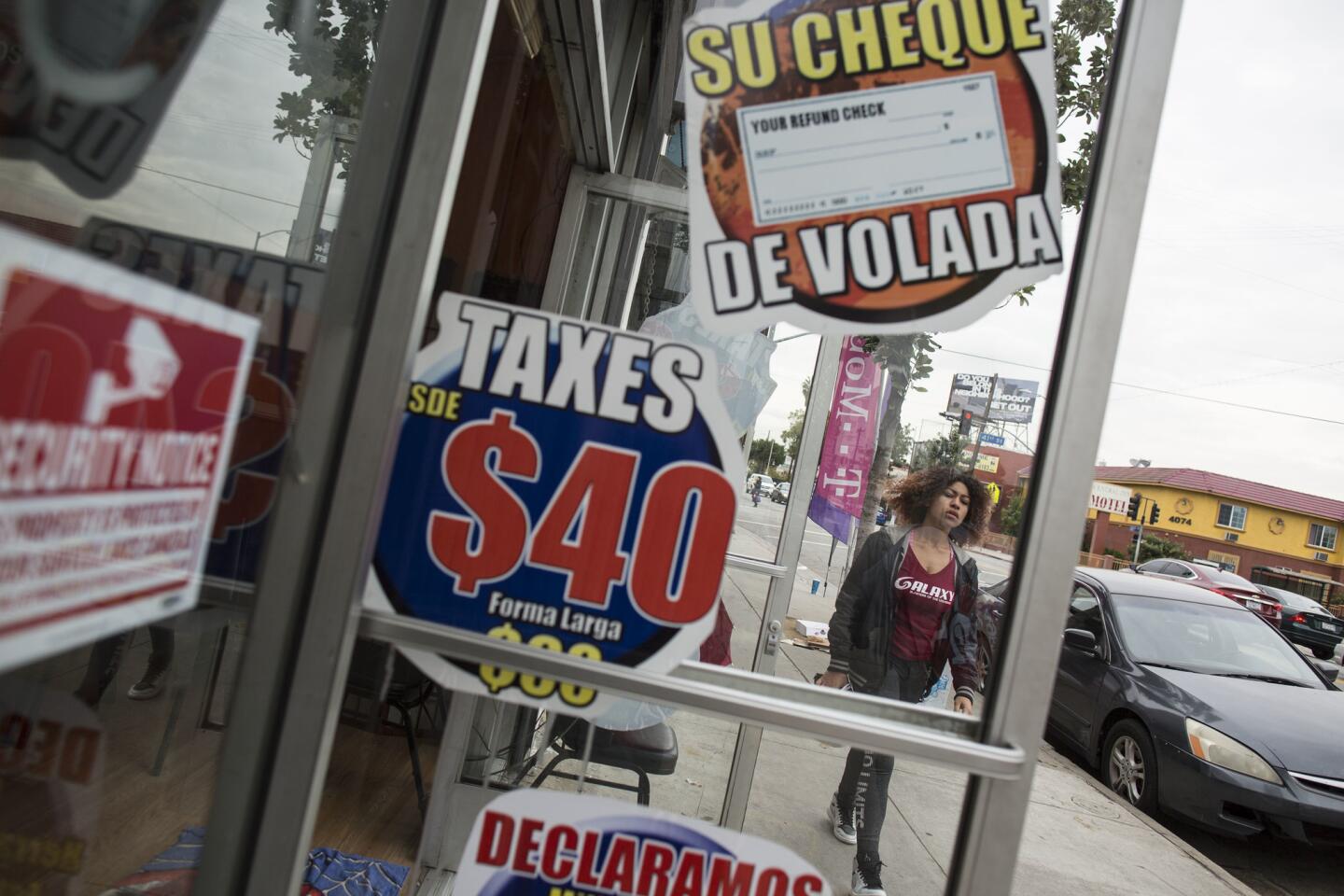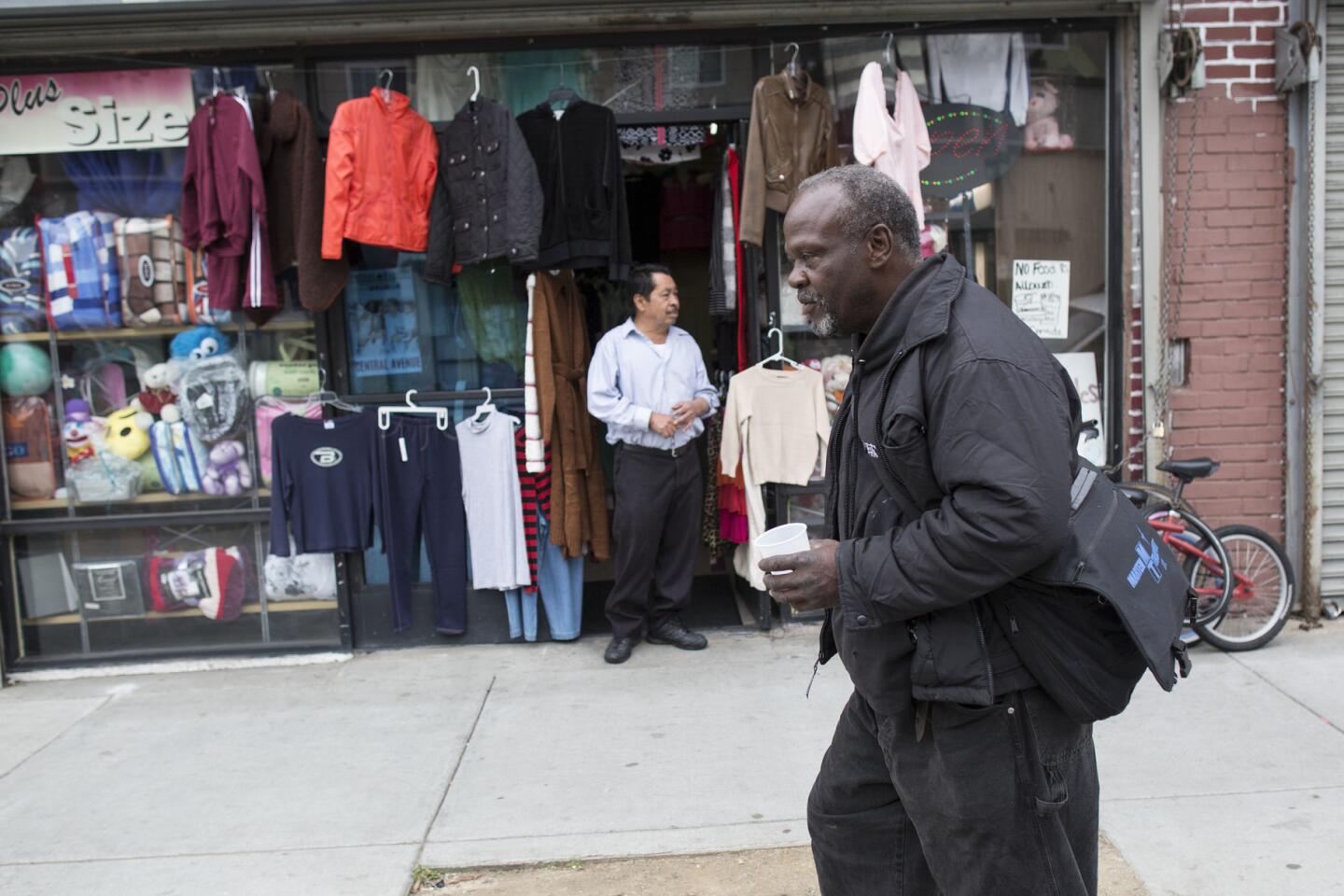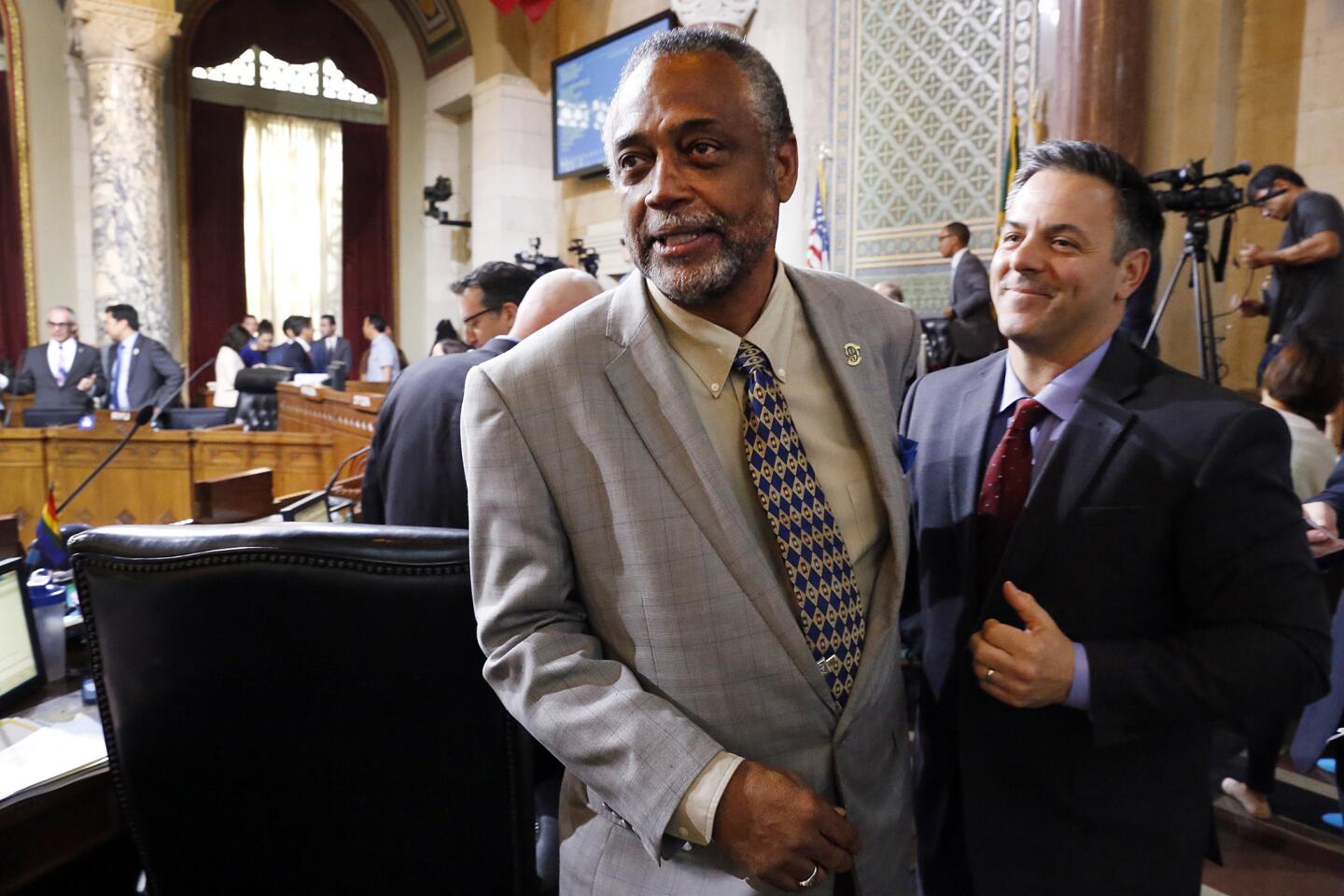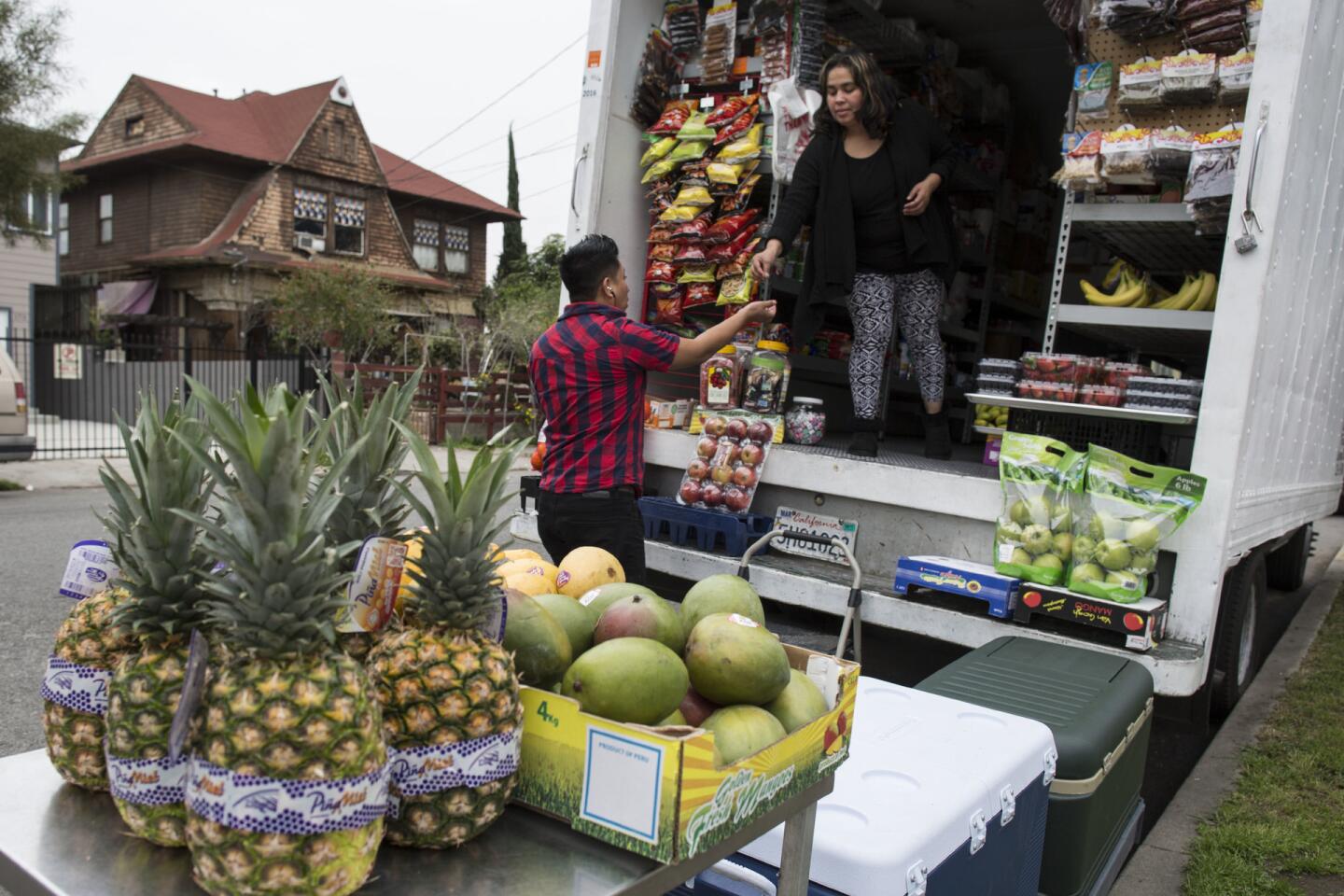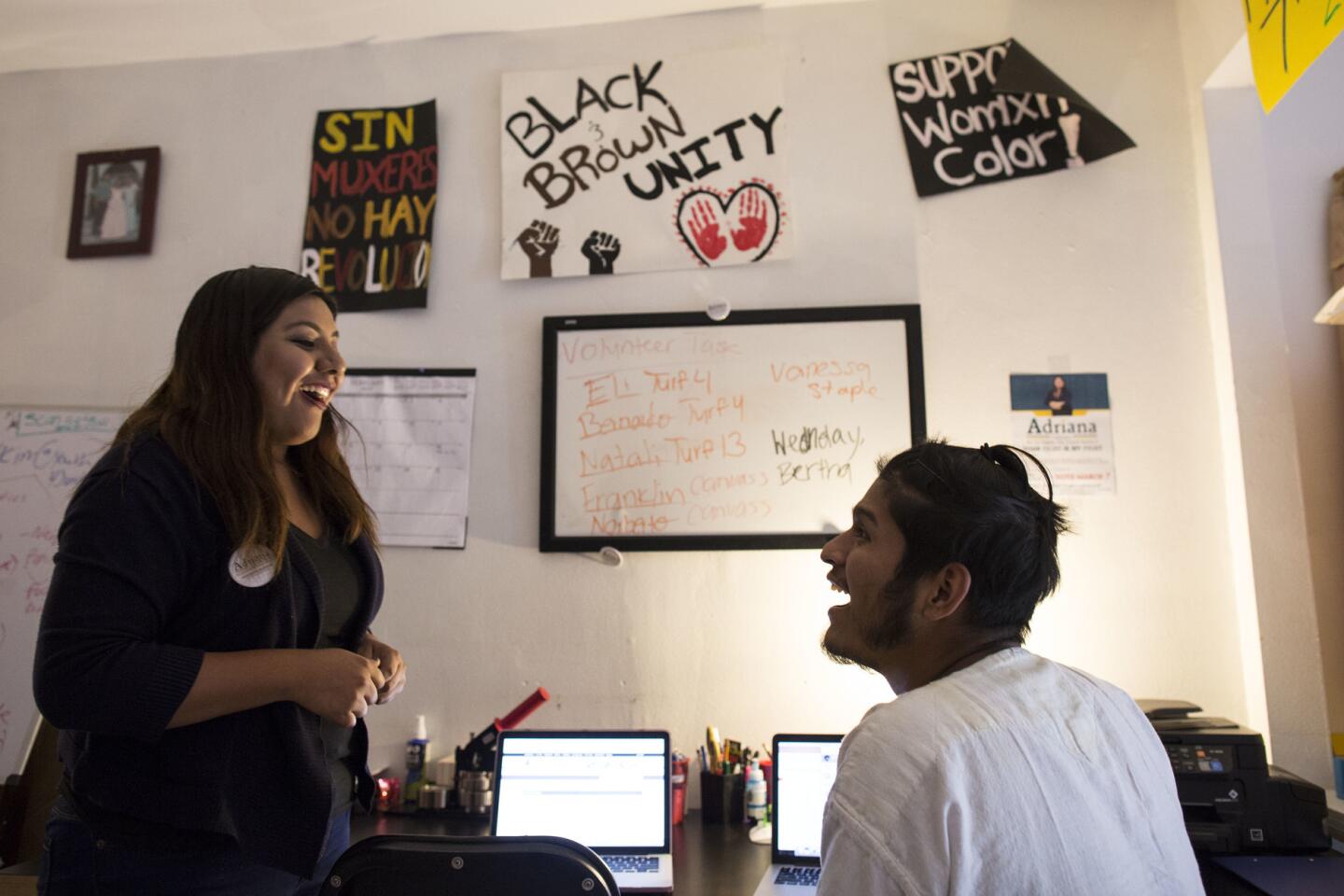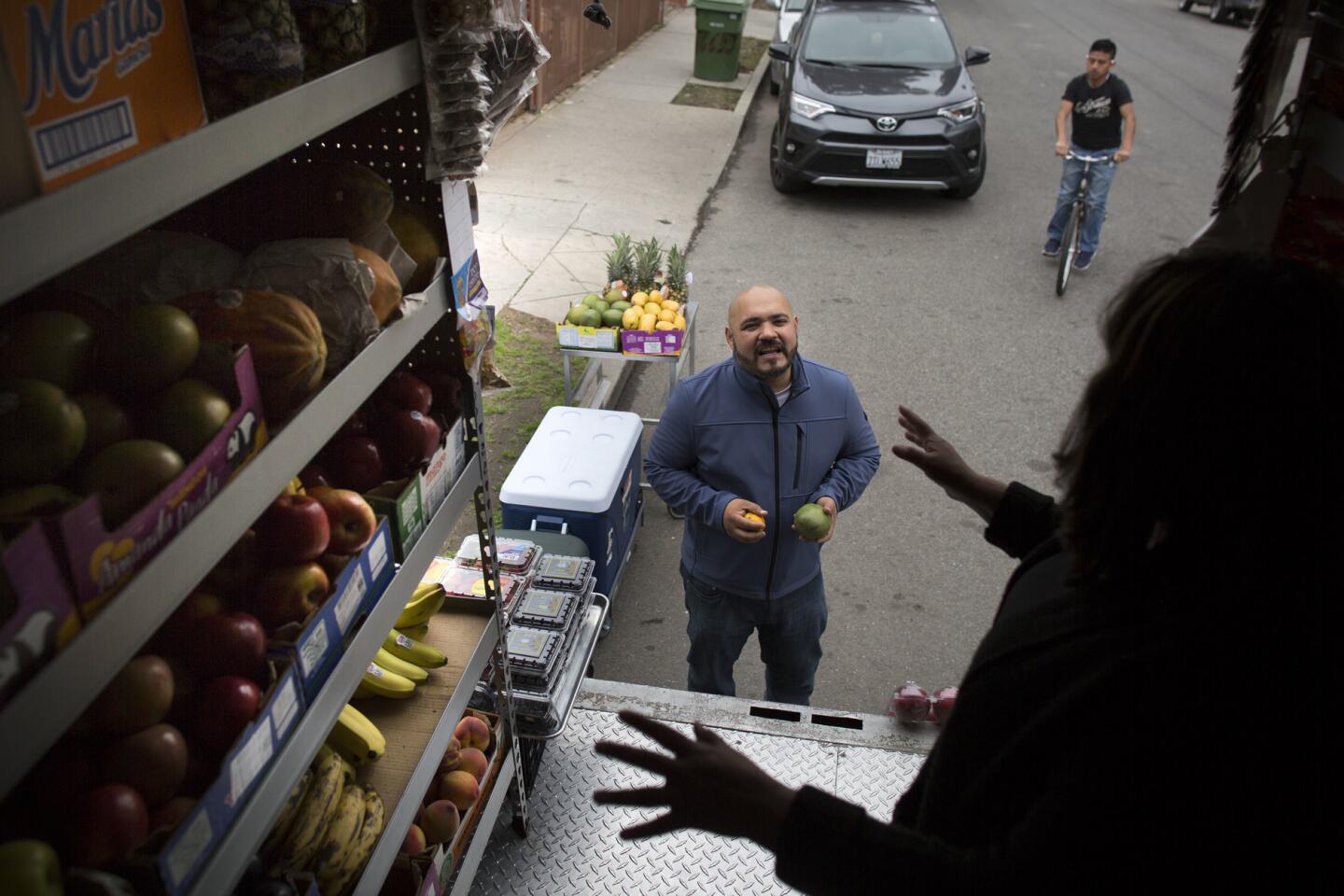In L.A.’s historic African American core, a growing Latino wave represents a possible ‘turning point’
Few places hold as much importance in Los Angeles’ black history as Central Avenue, the birthplace of the West Coast jazz scene and a magnet for those leaving the South seeking a better life.
It runs through City Council District 9 in South Los Angeles and ends blocks from City Hall — a pathway that is both symbolic and literal. Voters in the district have elected an African American to the City Council since the early 1960s.
But blacks today are a diminishing presence in District 9, making up just 40% of registered voters. Latinos are the overwhelming majority of the district’s residents and 48% of its registered voters, according to city records.
Against this backdrop, two candidates with deep community ties are challenging incumbent City Councilman Curren Price in next week’s election, both seeking to become the area’s first Latino council member in decades.
At stake is black representation at City Hall. Two other council districts are represented by African Americans, and a loss for Price could be a bellwether for future South L.A. council elections amid a falling black population citywide, said political consultant and attorney Dermot Givens.
“This could be the turning point of the complete demise of African American political power in Los Angeles,” said Givens, who is not involved in the race.
Today, African Americans make up 9% of the city’s population, down from 17% in the 1980s, according to census data. Migration from Mexico and Central America has boosted Latinos to almost half the city’s population, up from 27% in the 1980s.
A similar shift has taken place in Compton, where about 31% of the population is black, down from 73% in 1980, according to census data. Despite those dwindling numbers, most of Compton’s political leadership is black.
But that power base did not translate into electoral success for Isadore Hall, a former state senator and Compton City Council member who ran last year for the southern L.A. County congressional seat vacated by Janice Hahn, now a county supervisor.
Hall lost to Nanette Barragán, a former Hermosa Beach City Council member. Hall is African American; Barragán is one of 11 children raised by Mexican immigrants.
In Los Angeles, Price, a 66-year-old former state senator and Inglewood City Council member, hopes to hold on to the City Council seat he won in 2013, when he defeated Ana Cubas in a runoff.
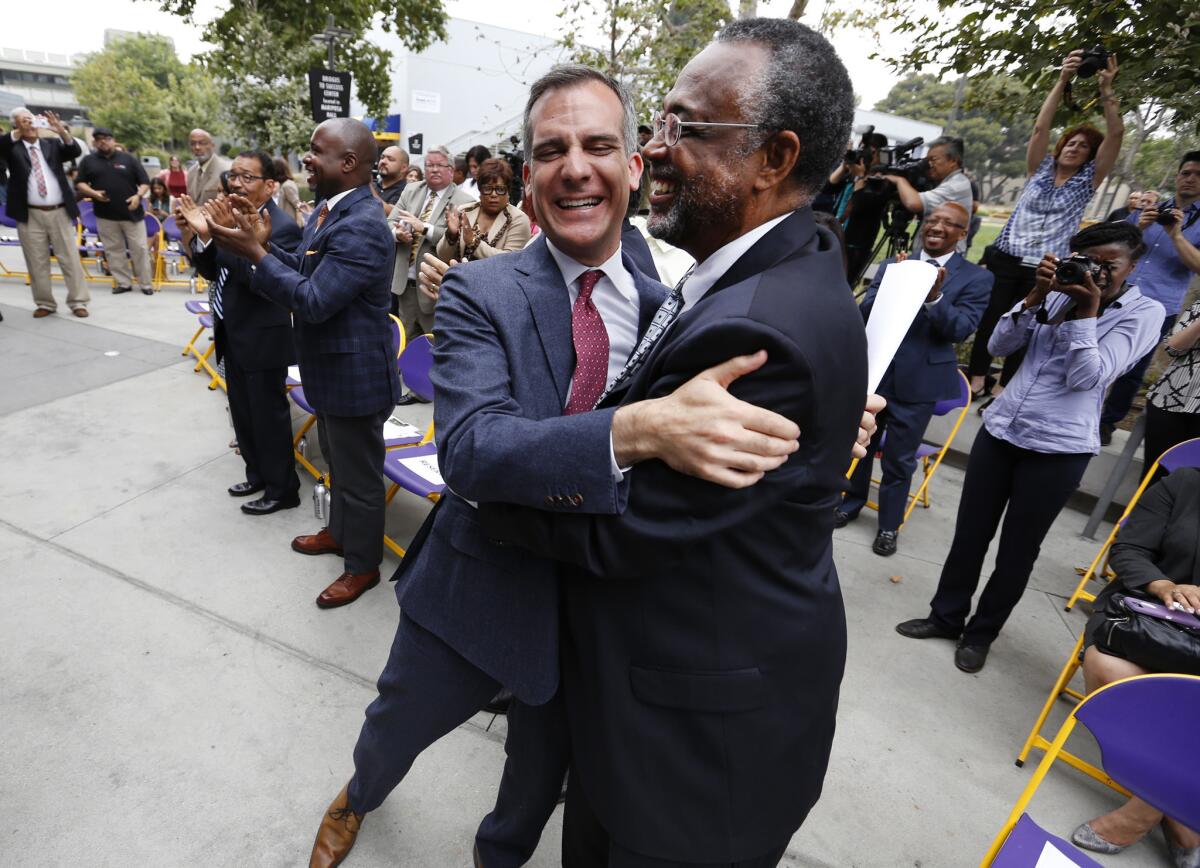
Since taking office, he’s launched an alley cleanup program and worked on citywide initiatives aimed at helping working-class residents, including a paid sick leave bill, protections for job seekers with criminal histories, and decriminalization of street vending.
Cognizant of the district’s shifting population, Price said that residents’ concerns haven’t changed. Locals still clamor for cleaner sidewalks and streets just as they did when the district had more black residents.
“I tell folks I’m not worried about being the last black council member,” Price said. “I just want to be the best.”
Activist Adriana Cabrera and community organizer Jorge Nuño say they would better serve the district, which stretches from Normandie Avenue to Alameda Street at its widest point, and reaches as far north as L.A. Live and as far south as 96th Street.
At a candidates forum last week, which Price missed, citing scheduling issues, Cabrera and Nuño debated police use-of-force issues, neighborhood beautification, housing and jobs. All but about a half-dozen of the 200 people who attended were Latino.
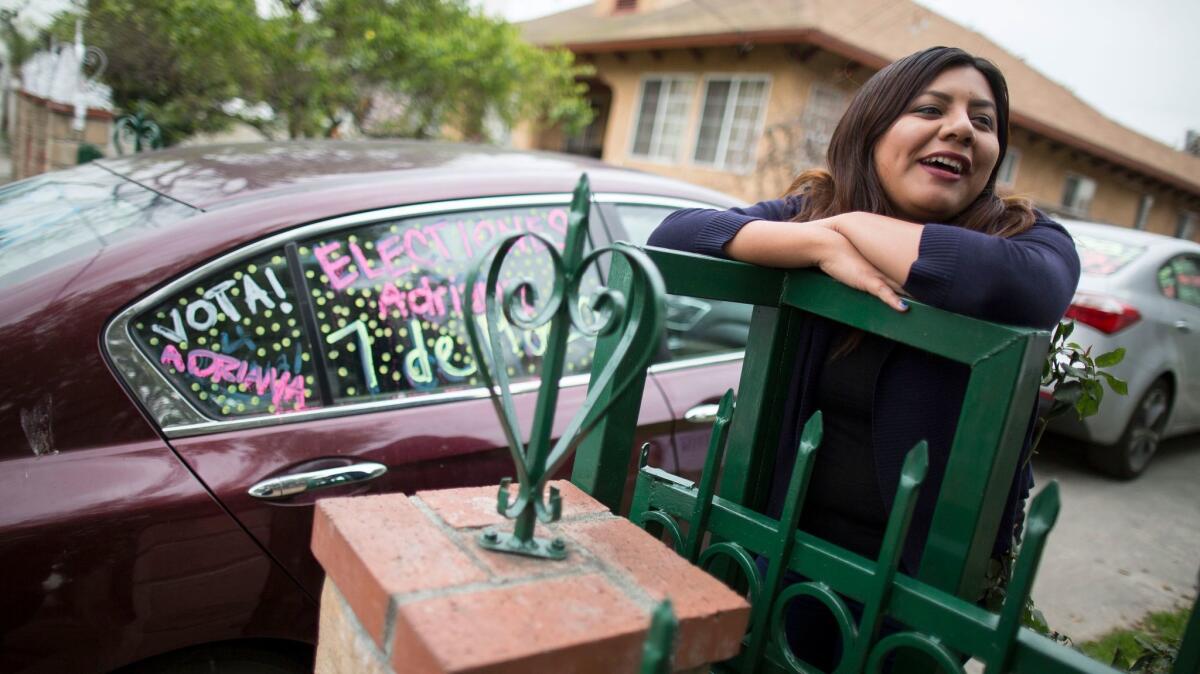
Cabrera, 24, who served on the Central Alameda Neighborhood Council, said that if she was elected, she would try to help immigrants who are in the country without legal permission win the right to vote.
The daughter of Mexican immigrants, she also wants to let such residents donate to campaigns so their voices are heard on local issues.
“It’s time to shift the hands of political power into the hands of our community,” Cabrera told attendees.
Voter turnout on March 7 is expected to be low, but the races could see higher Latino numbers, spurred in part by reaction to President Trump’s anti-immigrant policies.
Price has raised more than $422,000, far more than his rivals. But he still faces vulnerabilities because of Trump, said Dan Schnur, a political communications professor at USC.
“Trump’s candidacy and now presidency is serving as a motivator for broader political participation in the Latino community,” Schnur said. “Trump is obviously not on the ballot in this case, but he’s on the minds of Latinos and Latino voters.”
In what some viewed as an election-timed gesture to Mexican and Central American voters, Price joined immigration groups last week at City Hall to announce a $1-million donation to aid immigrants at risk of deportation under Trump.
Alberto Retana, president of Community Coalition, a South Los Angeles nonprofit, praised the councilman’s record on immigration efforts, citing his work to raise the city’s minimum wage and protect street vendors.
“I see him as a really strong leader and an advocate of black and brown people in South L.A,” Retana said.
The district has the highest poverty, unemployment and school dropout rates in the city, issues that confront all area residents, Price said. At the same time, a planned expansion of the L.A. Convention Center, the forthcoming Lucas Museum of Narrative Art and a new soccer stadium are part of a burst of new development expected to reshape this area.
Another development, a high-rise shopping and residential complex called the Reef and planned for Washington Boulevard, was approved last year despite calls by some groups for more on-site affordable housing.
Price said he’s satisfied with the developer’s donation of $15 million for affordable housing to be spent in the district, which the councilman believes is the best approach.
The city’s housing lottery system is open to everyone in the city, so there’s no way to ensure District 9 residents would be able to move into those lower-priced Reef units, Price said.
Nuño, 40, argues that the Reef development will carve out an area for wealthy newcomers and lead to displacement of existing residents. He also wants more protections for rent-controlled housing in the area.
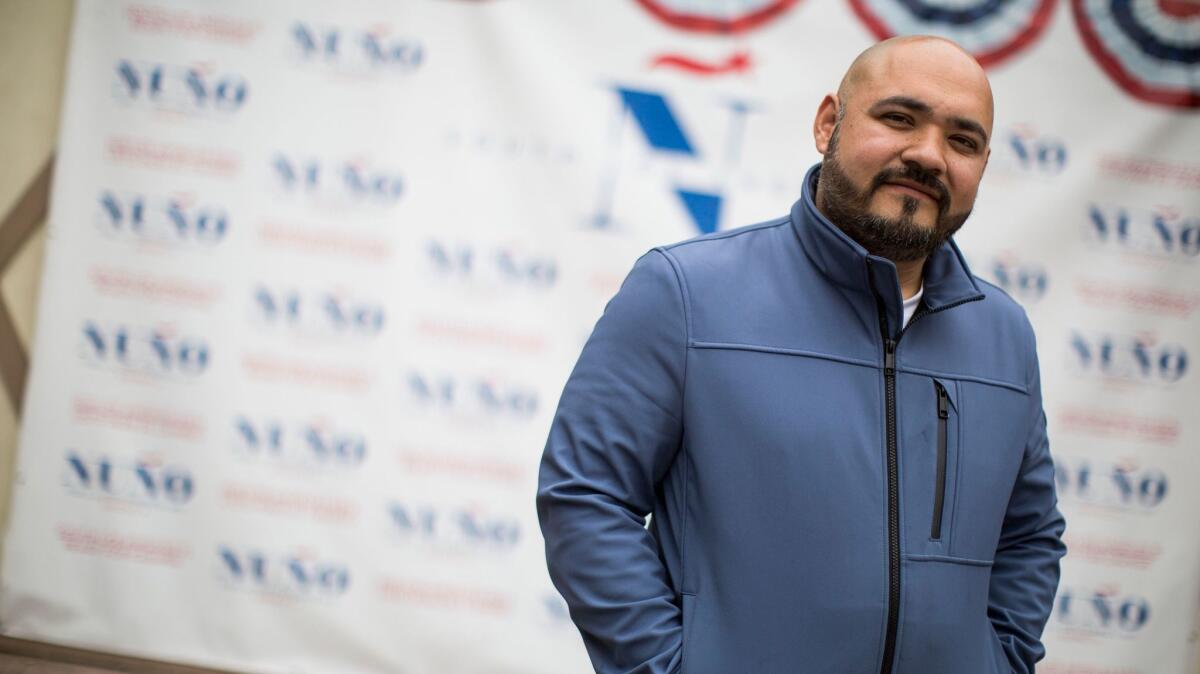
A graphic designer, Nuño runs a community center out of his home at 35th Street and Maple Avenue. Several nonprofits, including one launched by Nuño targeting teens, operate out of the center.
Nuño has vowed to make District 9 a “sanctuary district,” a promise that comes as city officials decline to use the phrase “sanctuary city,” saying it’s unclear whether it applies to Los Angeles.
With the election days away, Nuño and Price are benefiting from outside money.
An independent expenditure committee run by Marisela Nuño, the candidate’s sister, has raised $50,000. One of the fund’s top donors is Lorenzo Caccialanza, an actor and former soccer player who is a partner of Marisela Nuño in a construction venture.
Price, meanwhile, is backed by several independent expenditure committees, including one funded by the Reef’s developers.
The African American Voter Registration, Education & Participation Project reported last week spending $54,000, largely on mailers, to back Price. The independent expenditure is largely funded by electrical workers.
Clemente Franco, a member of a South L.A. neighborhood council, said race can’t be ignored in this election.
“This is America. Race plays a role in everything,” Franco said. “People look around and say, ‘Why can’t someone like me represent me?’”
dakota.smith@latimes.com | Twitter: @dakotacdsmith
angel.jennings@latimes.com | Twitter: @angeljennings
ALSO
How the terror of the North Hollywood shooting changed the LAPD and policing
Three people are killed when small plane crashes into Riverside neighborhood
More to Read
Sign up for Essential California
The most important California stories and recommendations in your inbox every morning.
You may occasionally receive promotional content from the Los Angeles Times.
